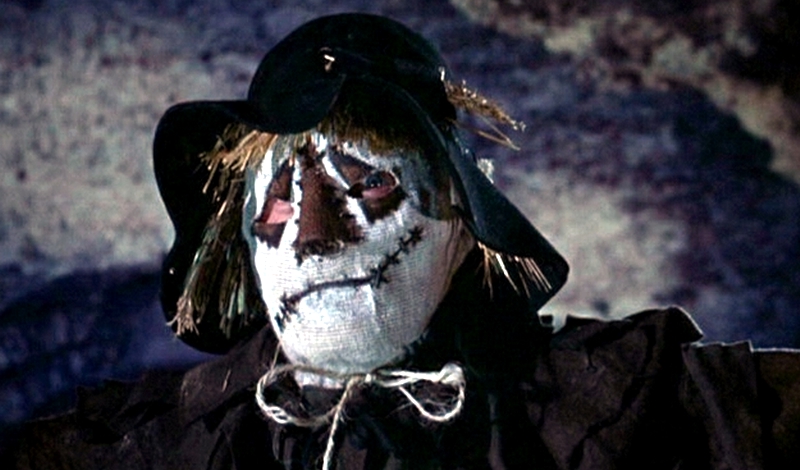
Dr. Syn, Alias the Scarecrow (1963), credit IMDb
ENDNOTES, August 2019
In this edition: Pergolesi, A Neapolitan Stabat Mater; the film music of Gerard Schurmann, reviewed by Stuart Millson
From the extraordinary across-the-centuries choral archive that is the ICSM/CHRONOS record label, comes one of the most surprising and dazzlingly recorded projects of baroque music of the last ten years: a re-imagining of Pergolesi’s Holy Week homage, the Stabat Mater– but interspersed with fragments of the folk and popular music of the day – as if the church doors had been opened to allow the songs and sounds of the Neapolitan streets to fuse with the sacred music of the hallowed interior.
This vision and “curation” of organist and conductor Franck-Emmanuel Comte, directing the period ensemble, Le Concert de l’Hostel Dieu, combines hypnotic, meditative recitatives, such as Donna Isabelle, canzone and Miserere, her long, haunting lament as “Isabella, the harrowed one…” calling upon God to “have mercy on me… according to Thy great mercy” – with contrasting tarantella dances, percussive, skipping rhythms, fanned by the thrumming of stringed instruments, and a high-pitched street-musician’s whistle.
In the programme notes, Franck-Emmanuel Comte writes of his “timeless Italian journey”, as if the recording is more of an attempt to capture the essence, talk and song, flavours and day-to-day life of an ancient European city and culture, than any mere baroque or Pergolesi interpretation.
He writes passionately about:
“… an astonishing convergence of religious songs sung by the celebrants, polyphonies improvised by the confreres in procession carrying the cross, ‘flonflons’ of the local band interpreting extracts from the Stabat Mater… and simultaneously outdoors, tarantellas are sung, danced and hammered.”
Yet from this brew still comes sacred music from the deepest spiritual waters – the recording “sound” itself, as clear as crystal – with an echo and gentle reverberation, as if the notes are bouncing from walls of precious stone. Such is the sound-engineering of this CD, that the music – whether the slow, descending, precise notes of the baroque strings, or doleful, soulful background organ – hangs in the air, like living threads from the original place of recording, in this case, the Church of Chazelles-sur-Lyon.
The final utterances of this procession in music, just prior to a sultry glow from a tarantella dedicated to the pleasure of earthly love at track 18 – Pergolesi’s Quando corpus(when my body dies) and his wish for the soul be “given in the glory of paradise – Amen” – offer a truly mystical, supernatural ambience; taking us back to a state of mind of a far-off age.
In contrast, we go to British film studios, chiefly from the 1950s and ‘60s, for the vivid, often red-blooded cinematic scores of Gerard Schurmann, a figure whose name has slipped from view, but truly deserves a re-appraisal. The CD, from Chandos, conducted by Rumon Gamba with the BBC Philharmonic, resurrects gripping symphonic music – my personal favourite being a 20-minute-long suite from the 1963 film, Dr. Syn, alias The Scarecrow; a Technicolor swashbuckler, starring Patrick McGoohan as the Kent marshland vicar, Dr. Syn – as created by writer, Russell Thorndike – by day, a philosophical parson, but at the rising of the moon, the leader of a ragged army of smugglers.
Schurmann’s music sets a considerable pace – reminding the listener of Erich Korngold’s soundtracks for The Sea Hawk and The Adventures of Robin Hood. Listen out, especially, for those manic brass fanfares in ‘The Chase’, and the subdued, brass snarl in the opening movement, depicting the furtive brandy smugglers. Flights from the King’s revenue inspectors, betrayals, intrigues galore – Schurmann finds the right mood for each slice of action. In the second part of the suite – the introduction of the character of Dr. Syn – a noble theme is created by the composer; a far-off contemplation, beneath Romney Marsh coastal skies, of a better world – a tune which makes a thundering, Vaughan Williams-like peroration as the curtain closes on the story.
Also on the disc are brilliantly-crafted sequences of music, tense or tender, for Konga (shades of Prokofiev here), The Long Arm, Horrors of the Black Museum and the main title from the 1967 war film, Attack on the Iron Coast – but his work on celluloid does not give the full picture. There was another side to the composer. Some 30 years ago, his setting of The Vision of Piers Plowman was performed at a Three Choirs Festival concert, and broadcast by BBC Radio 3 – confirming Schurmann as a figure in the post-war English tradition of Vaughan Williams, Britten and Tippett.
Stuart Millson is the Classical Music Editor of The Quarterly Review
CD details:
Pergolesi, A Neapolitan Stabat Mater. CHRONOS, ICSM 012. Live recording from Lyon.
The Film Music of Gerard Schurmann, Chandos, 10979. Recorded at MediaCityUK, Salford










